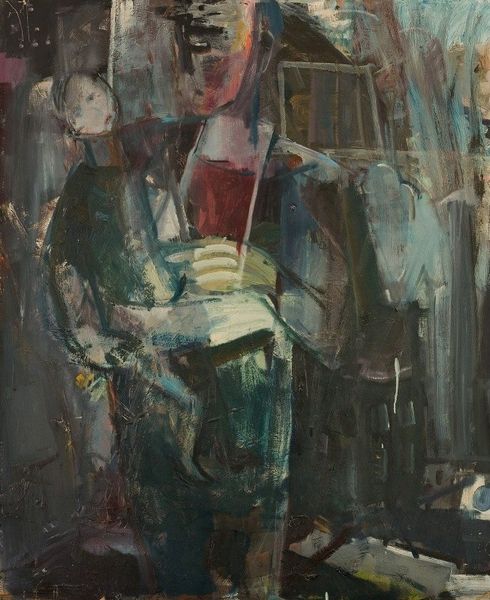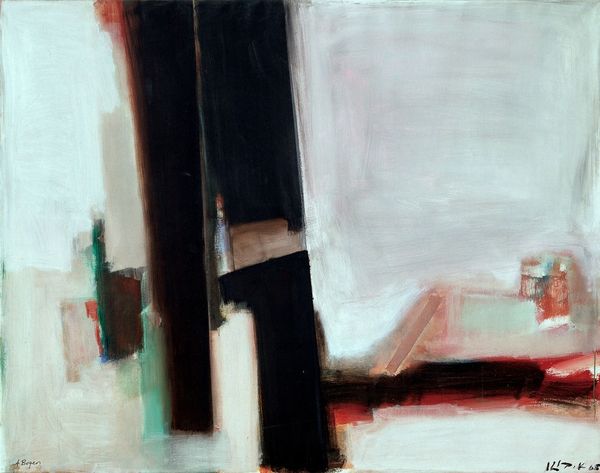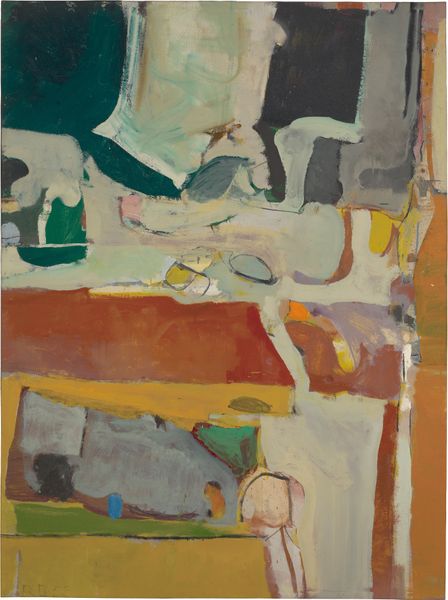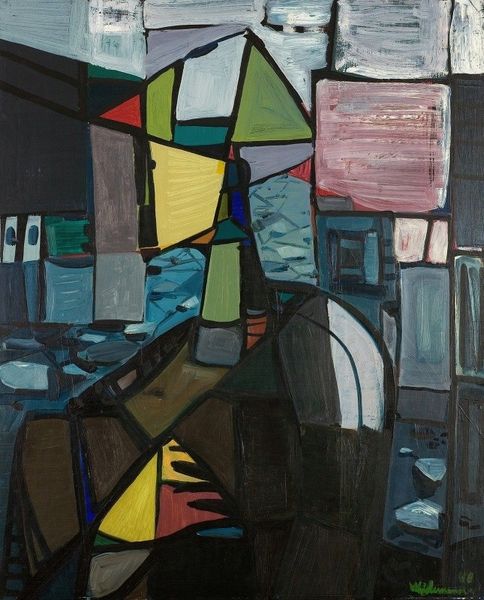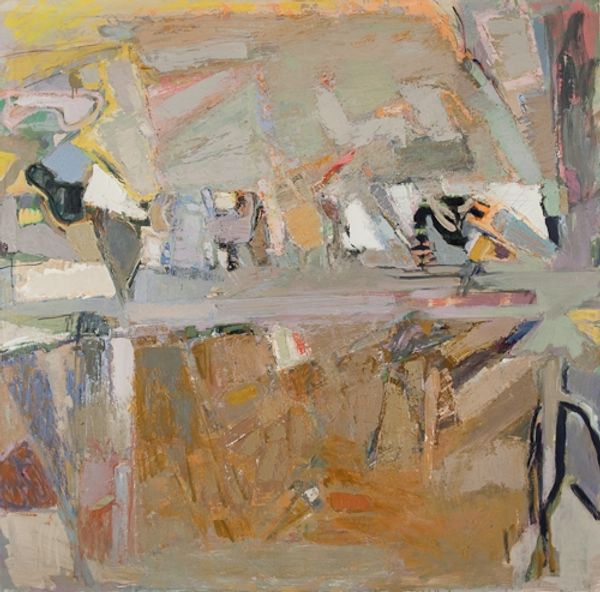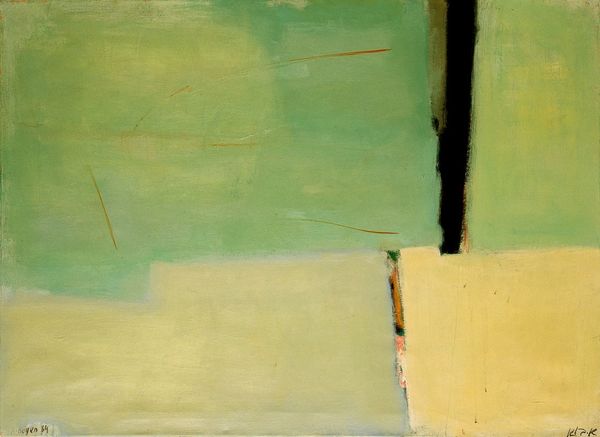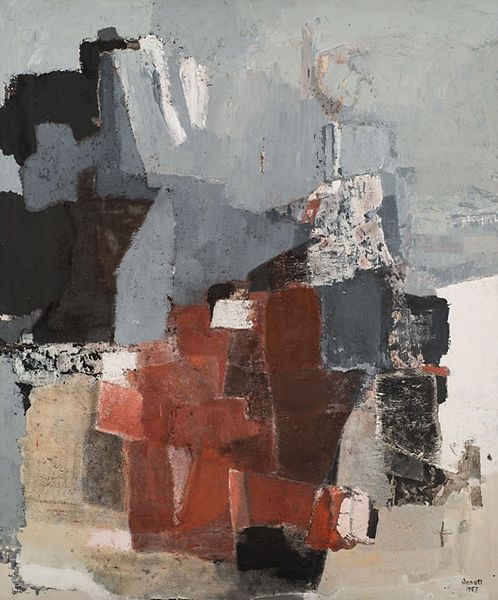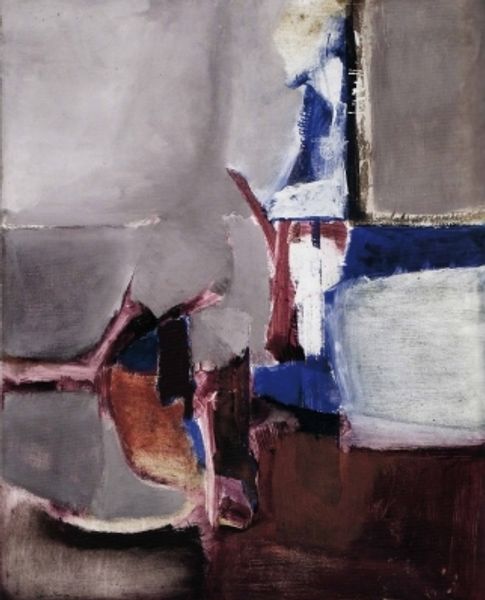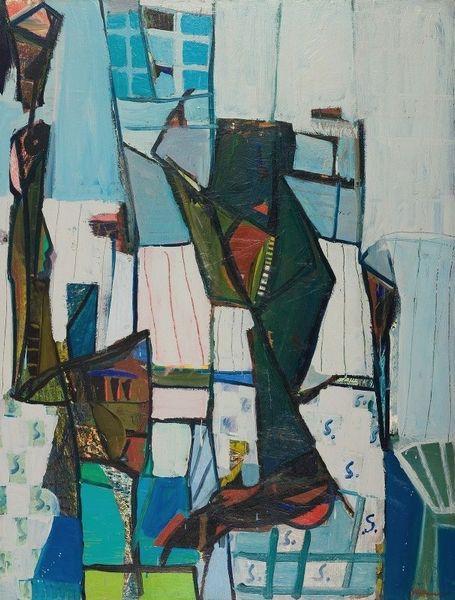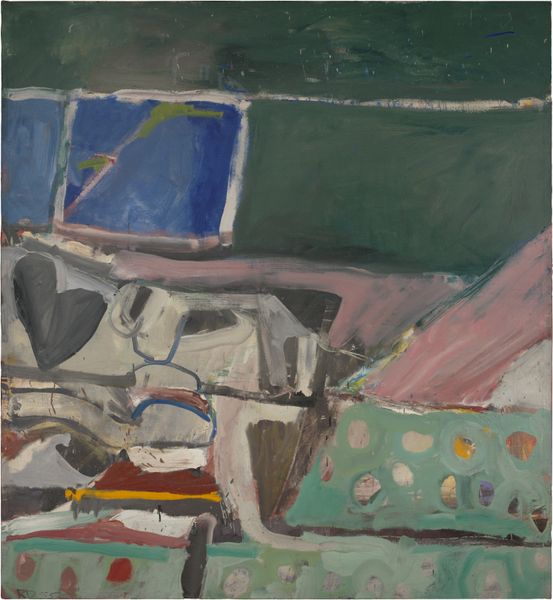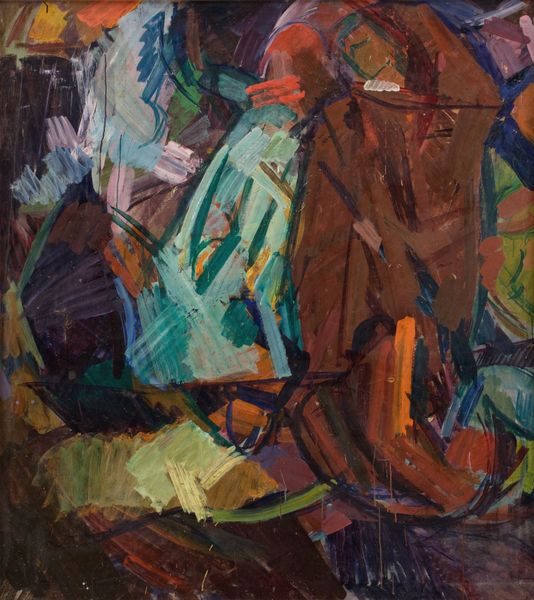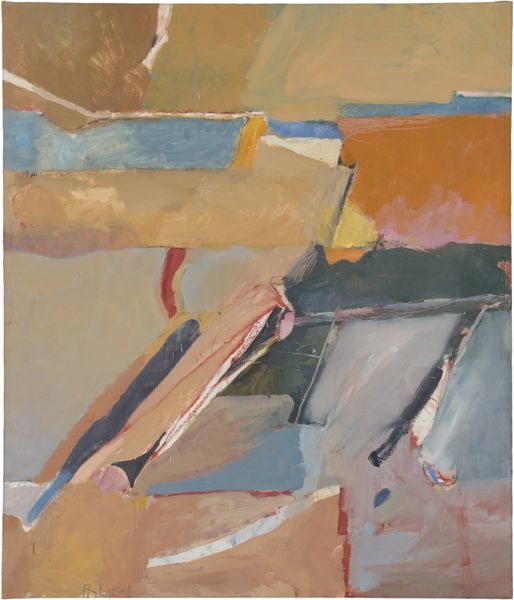
oil-paint
#
abstract-expressionism
#
abstract painting
#
oil-paint
#
landscape
#
oil painting
#
geometric-abstraction
#
cityscape
Copyright: Public Domain: Artvee
Curator: Welcome. Before us hangs Jakob Weidemann’s “Komposisjon,” painted between 1945 and 1946. It's oil on canvas, showcasing a unique exploration of form and space. Editor: My first impression? The overall tone is muted, almost melancholic. I feel like I'm looking at the remnants of something, a memory perhaps. Curator: That subdued palette undeniably influences the reading. Consider how the blocks of color interact. See how the artist uses these forms to construct a visual language, abstracting recognizable elements. There's a delicate balance, a tension between representation and abstraction. Editor: But what is being represented? It feels like a post-war cityscape, maybe, hinting at reconstruction but also lingering on what was lost. The fragmented buildings, that lonely little boat, don’t you think they speak to the trauma of that period? The painting does more than just abstract the urban; it seems to interrogate its purpose post-conflict. Curator: The artist definitely invites layered interpretations. Looking at the composition, note the calculated placement of geometric shapes—rectangles, trapezoids—forming a dialogue of planar surfaces. This, alongside the texture of the paint, is really what gives the work its strength. Editor: But Weidemann was working at a crucial time, responding to a world irrevocably changed. Shouldn’t we then also analyze how "Komposisjon" embodies anxieties surrounding urban development, the displacement, the reshaping of the very societies decimated by war? Curator: An important point. While the canvas offers much regarding materiality and construction, these points of discourse add complexity, highlighting socio-historical weight beyond basic formalism. Editor: Absolutely. It's a potent reminder that even in abstraction, we can uncover deep engagement with our shared past and its ripple effect on identity and perception. Curator: It pushes the viewer, without prescription, to actively decipher this visual world. Ultimately, "Komposisjon" is a potent investigation of balance and visual problem solving, revealing new angles from diverse schools of thought. Editor: A thought-provoking dance between aesthetics and historical awareness. These elements encourage us to see past pure geometric shapes to ask ourselves where beauty, and devastation, may converge in collective memory.
Comments
No comments
Be the first to comment and join the conversation on the ultimate creative platform.
